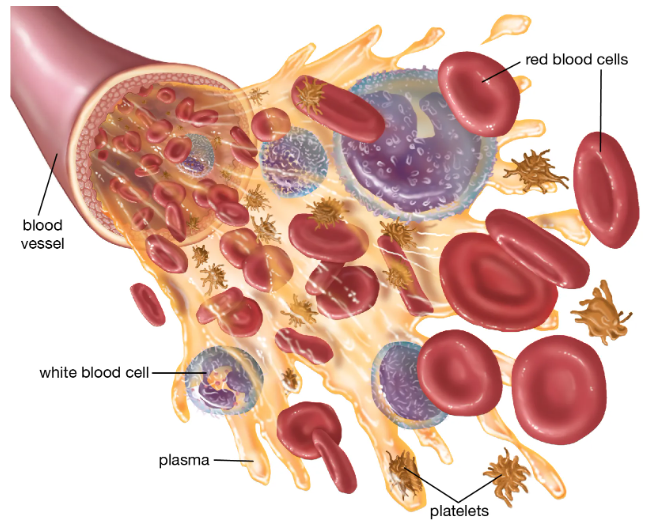Red Blood cells and their functions.
Blood is a connective tissue which consists of plasma and various types of cells like red blood cells and plasma cells, thrombocytes and white blood cells. WBCS consists of granulocytes, monocytes and lymphocytes, natural killer cells and dendritic cells.
Constitution of plasma:
Plasma is a yellowish colored liquid obtained after centrifugation of blood. On centrifugation the red blood cells settle at bottom, white bold cells form a creamy layer over the red blood cells and top layer is a translucent yellow liquid which is called plasma.

Blood Plasma consists of 50 to 60 % of the total blood volume. Plasma consists of serum and proteins and salt ions minerals in water. And their ions like Sodium, Potassium, Calcium, magnesium, copper, Iron. Apart from ions, proteins in the plasma consist of enzymes and antibodies.
Blood cells: There are following types of blood cells
1) Red Blood Cells (RBCs)
2) White Blood Cells.
Red blood cells: RBCs Are also called red blood corpuscles. RBcs appear red under microscope, and are not round but they are like circular disk concave on both sides. Red blood corpuscles consist of hemoglobin. Hb is a protein which combines with iron ions and with the help of its electronic charges over the iron. Oxygen is bound to hemoglobin and it is transported to body tissues. Heart muscles, brain get oxygen from circulating RBCs. RBCs help brain and other body tissue to indirectly breathe oxygen into their cells.
Hemoglobin (Hb): Hemoglobin binds with oxygen from the air taken in the lungs. It carries oxygen to body tissues when blood circulates from one point to another. Oxygen is utilized for production of energy for contraction of heart muscles and skeletal muscles, and many other biochemical functions.
Hemoglobin is a peptide chain made up of amino acids. Hb consists of alpha chains and beta chains, both are two in number. The alpha chain consists of 141 amino acids and the Beta Chain consists of 146 amino acids. The peptide forms a tetramer by making a complex with iron.
In our body iron Is stored in body tissue like muscles in the form of ferritin. The iron which is bound to hemoglobin is under circulation in the form of transferrin.


Leave a Reply